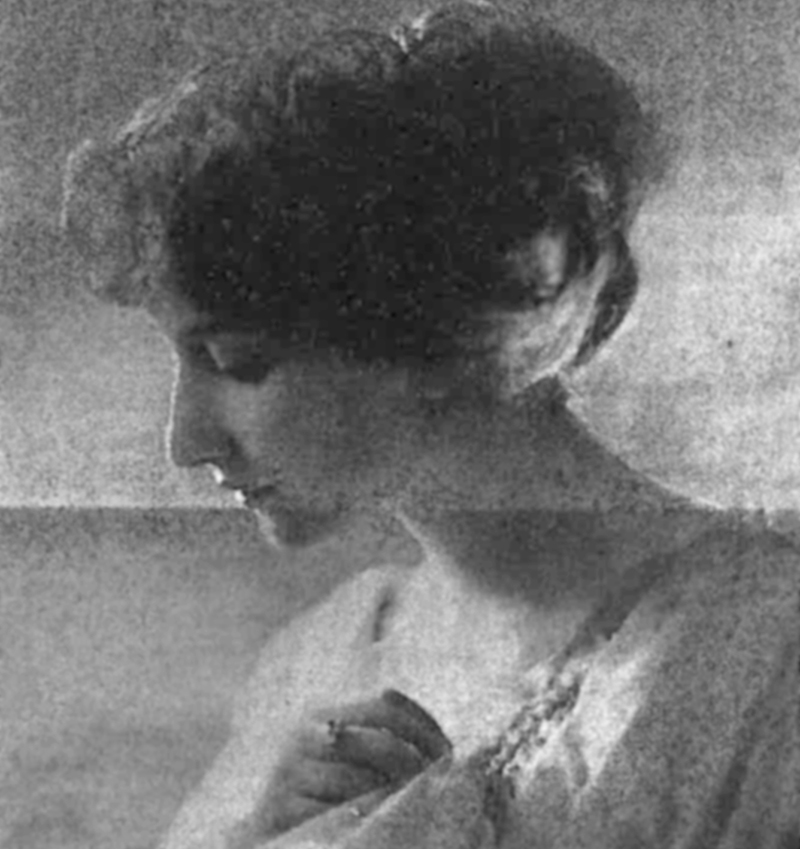A Centennial Reminiscence
BY ERNESTINE STODELLE
ART TIMES
Oct 1995
HERS WAS A beauty of motion such as a girl of sixteen had never dreamed of…. Not more than 5’3” in height, slender, perfectly proportioned, Titian-haired Doris Humphrey (1895-1958) was a shaft of light as she sped across the stage in the solo, “Papillon.” That was in 1928, at her first independent concert with Charles Weidman after they had both left the folds of the dance company known as Denishawn.
Later, that same evening, a transformation took place in a duet with Weidman. No longer a shimmering, leaping vision, Doris was clearly a woman of her times: her ankle-length dress was a rust-colored crepe, form fitting and unadorned. Her partner was costumed in dark trouser and a pale jersey top. Their dance together was no conventional pas de deux, wherein the man played the forlorn lover and the woman a dreamy-eyed creature in distress, but rather a penetration of one of the most fundamental elements in male-female relationships…the need of the man to answer the call of adventure and the compulsion of the woman to preserve their intimacy. Set to Scriabin’s tempestuous Etude #8, Opus 12 (Patetico), the duet still remains vivid in my memory after sixty years.
“Papillon” and the “Scriabin Etude (Patetico),” the first, pure lyricism, the second, stark drama, can be seen retrospectively as the first evidence of Humphrey’s astonishing choreographic range. In his review of a later Humphrey-Weidman concert, in which Doris presented additional proof of her performing gifts, New York Times critic John Martin perceptively compared her dancing style to “steel and velvet: strong, resilient and accurate, with an exterior of the utmost delicacy.”
Martin’s reference to the resiliency of steel and to the sensuous touch of velvet apply equally to Doris’s personal resourcefulness in combating the vicissitudes of the depression days when she had to salvage her ideals from the rubble of constant disappointment. For those of us who had the privilege of sharing the strain of those early days with the artist, there was no end to our admiration for her courage in the face of multiple obstacles over which she had to climb to achieve her ends. The main purpose of her life was clearly the accomplishment of her choreographic aims—and they would always be fulfilled with grace and “the utmost delicacy.” An innate sense of logic provided her with the ability to have clear-sighted opinions when it came to critical judgments of her colleagues’ works, and, most important, of her own choreography. She could shift easily from subjective impulses to objective analysis … and she never hesitated to dispose of a dance that didn’t fulfill its promise. Certainly a rarity among practicing artists.
A critic supreme in human relations as well, Doris’s objectivity was legion. Being one of the fortunate beneficiaries of her personal and professional judgments during my six-year association with her, first as a student, then as a member of her company, and later as her teaching assistant, I remember well the day when my director sized me up candidly: “Ernestine,” she remarked, “I am worried about you. You are guided by your heart, not by your head.” (Since then, I have been trying desperately to repair the imbalance!)
The steel of Doris Humphrey’s mind with its insights into reality never interfered with the velvet of her creative spirit. My first encounter as a student with my future teacher’s undying faith in the dance was in the form of a credo posted in the studio:
To be master of one’s body:
to find a perfect union
between the inner thought
and outer form—to draw
from this a radiance and
power that makes of life
a more glorious and vital
experience—this is to dance.
In spite of repeated disappointments, her message was ever positive. Dances appeared, one after the other. Ranging from lyrical abstraction of reality to drama of all dimensions, there was the pictorially conceived and music-less “Water Study,” the pure and perfect Processional from the “Drama of Motion” (also without accompaniment) and the spiritually evocative “Air for the G String” set to Bach’s noble “Air” from his Orchestral Suite in D Minor, the chillingly expressive distillation of a Cretan ritual—“Dionysiaques”— and Doris’s brilliant solo, “The Call/Breath of Fire,” an adventure into a puposely limited structure suggesting an emotional stasis…a mini-dance, decades in advance of the sixties! Then, her two visualizations of the role of women: the first, an ensemble work daringly conceived in biological terms, “Dances of Women” and “Two Ecstatic Themes,” a two-part solo delving into the dual nature of a modern woman who obeys her instincutal need for love and countermands it with her equally urgent demands for self-identity…doubtlessly, the first statement of its kind in dance long in advance of the emergence of “women’s rights.”

